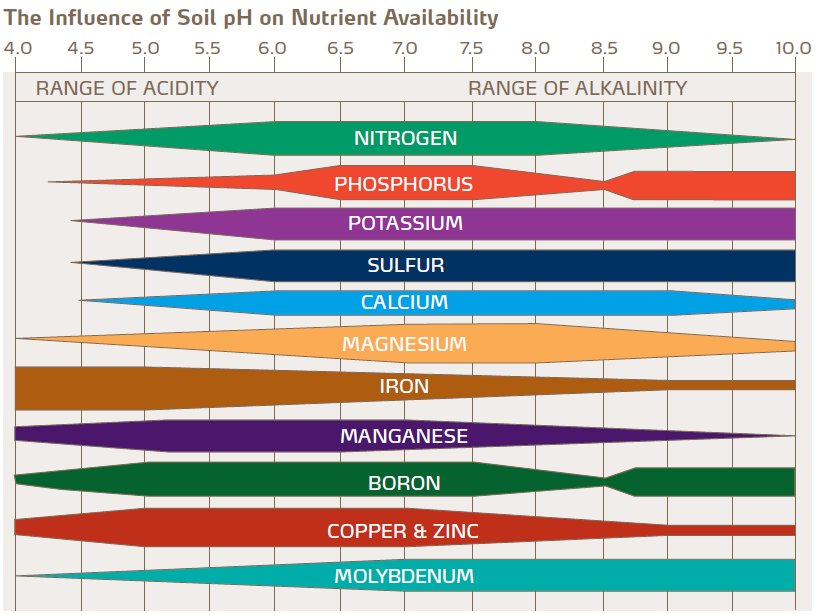Soil pH – What is it and why is it important?
Author: Stefan Palm Date Posted: 6 February 2024
pH stands for “the potential of Hydrogen”, which can be measured in a soil to determine whether it is acidic or alkaline. This may sound sciencey, but it’s a very important consideration in maintaining a healthy lawn.
pH can range from 0 (Acidic) to 14 (alkaline), where a neutral soil is 7. Different plants have adapted to grow in different pH values; however, when it comes to lawns, the optimal range is 6.5 – 7.
What does it mean?
When soil becomes overly acidic or alkaline, certain nutrients become locked out and are therefore unavailable to the lawn. For example, if your soil is too acidic (e.g. has a pH of 4.5), elements like Nitrogen, Phosphorus and Potassium would become locked out, which will adversely affect your lawn. You could tip fertiliser on by the truckload, but the lawn simply wouldn’t be able to access it. Similarly, if your soil was too alkaline (e.g. had a pH of 9 or higher), then elements like Iron, Manganese, Copper and Zinc would be locked out. It’s only when a soil pH is around 7 that all essential minerals and elements are available to the lawn.

How do you test it?
pH can be tested in a number of ways. The most accurate way is to use a pH meter; however, if you don’t own one of these, the next best option is a barium-based soil pH test kit. These will give you more of an indication of pH than an exact read but they are very useful in getting an understanding of your soil pH.
How do you alter it?
If your soil is too acidic, you can increase the pH by adding agricultural lime at the rate of 40g per square metre. One thing to remember here is that you can generally only alter pH 1 point at a time. For example, if you had a pH of 5 (acidic) and you wanted to increase it to 7 (neutral), then you would need two applications of lime approximately four weeks apart.
Similarly, if your soil is too alkaline, you can reduce the pH by using powdered agricultural sulphur. Sulphur is slow to act, so you would need to allow a couple of months between applications.
Both lime and sulphur are cheap to buy and are available at most garden centres and hardware stores. Investing some time and money in getting the pH levels right in your soil will pay big dividends in the overall health of your lawn.


